Best endurance bikes: a buying guide
Our top picks of the best endurance bikes suited to long days in the saddle plus what to look for when buying an endurance bike
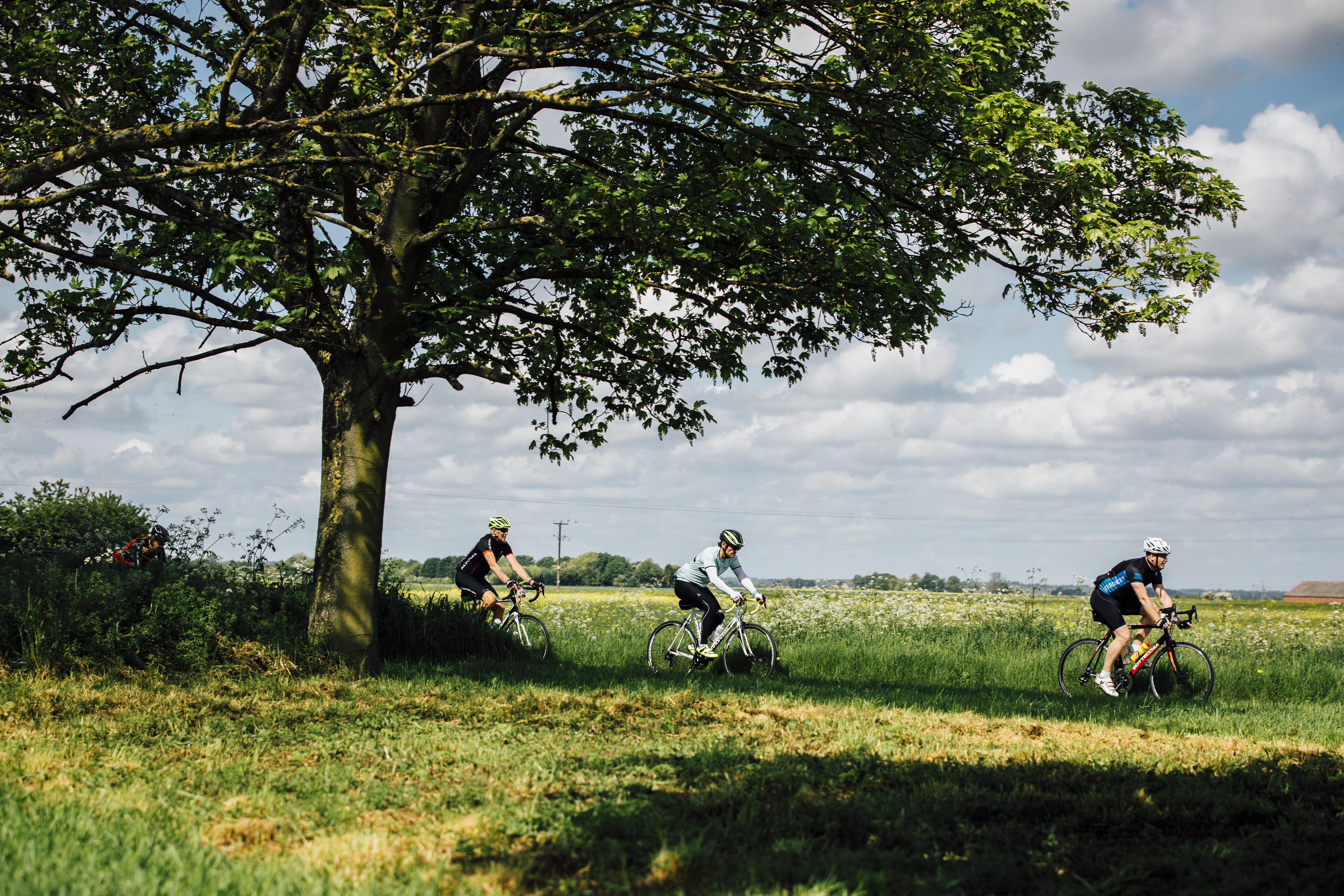
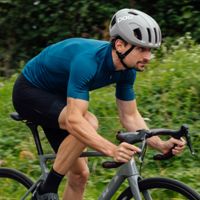
While race bikes are designed primarily with speed in mind, the best endurance bikes instead place a premium on comfort and stability. For this reason alone they are a great fit for many cyclists. If you like to ride all day on adventurous routes, enjoy a leisurely spin around the lanes, or take part in the weekly club runs, their balanced range of attributes make them an ideal companion for all these and more.
The frameset is central to the endurance bike’s appeal. Typically it features more relaxed geometry, with a higher stack and shorter reach putting the rider in a more upright, and comfortable, position. To further aid comfort, expect tyre clearances to be generous, allowing for tyres as wide as 35mm, and in some cases a bit wider still. You may even get some suspension or sorts, such as Specialized’s Future Shock system.
Components too are chosen with a view to long miles over a range of road surfaces. Handlebars are likely to be wider than their racing counterparts and stems may be a little shorter and more upright. Many seat posts incorporate some inbuilt flex.
Similarly gearing is aimed at making the ride more comfortable. To achieve this a wide range is typical, allowing riders to preserve energy over a long day of climbing. For this reason endurance bikes can also make great tourers or bikepacking rigs, allowing you to carry a bit of extra weight for a multi-day trip and not have to pay for it on the hills; some endurance models will even have bosses for a rear rack.
We've ridden and reviewed a wide range of endurance bikes, so here's our pick of the best endurance bikes, after which we'll help to answer questions about what features you should look out for when searching for a bike in this category.
The Best Endurance Bikes
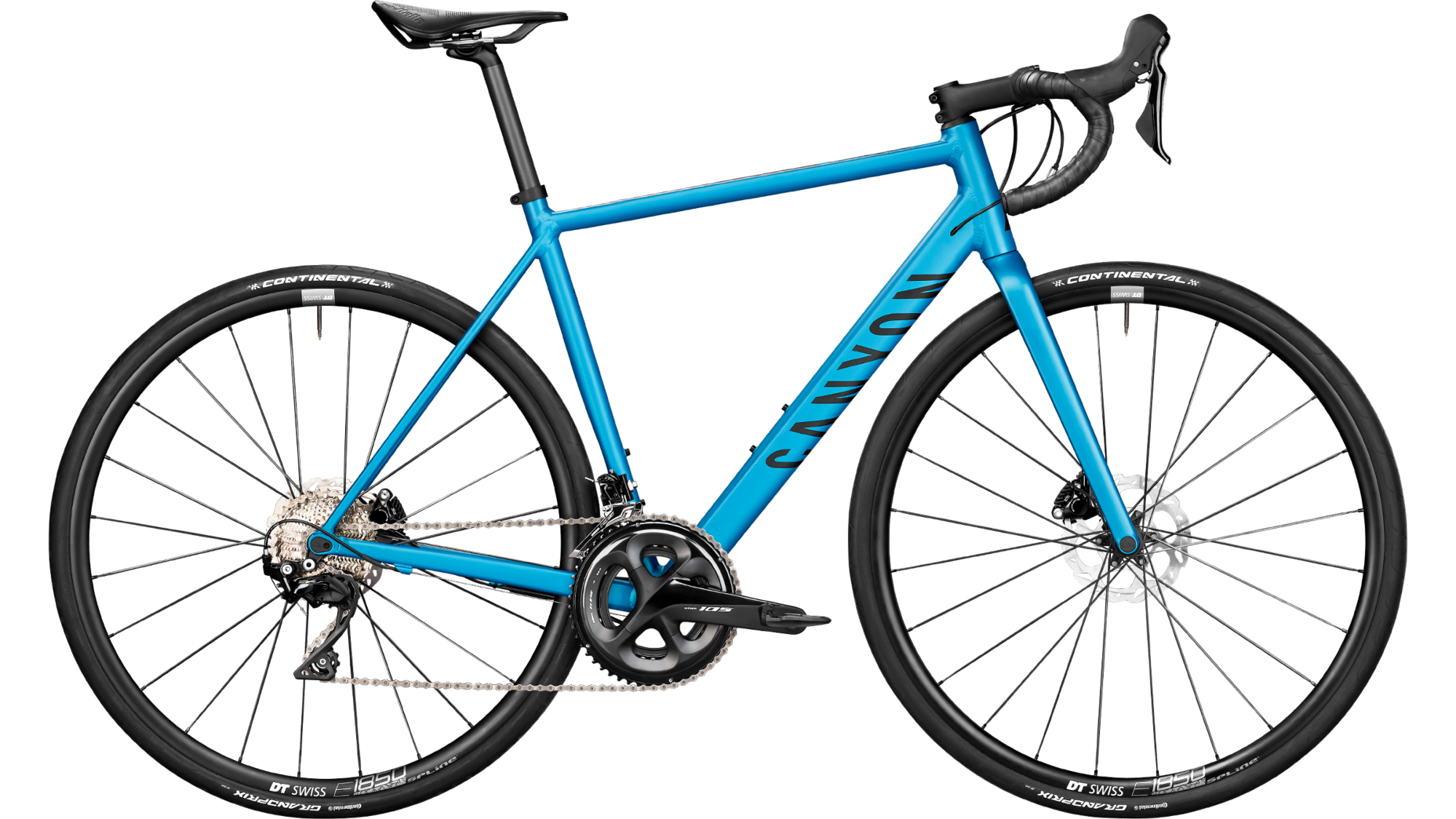
The alloy Canyon Endurace range provides quality riding
Specifications
Reasons to buy
Reasons to avoid
The Endurace AL 7 has had a recent update. It's still designed for all-day riding adventures, with geometry racy enough to provide a fast and fun ride. However it now has clearance for 35mm tyres and comes specced with 32mm (as opposed the 28mm on our review bike). There are also mounts for a tube tube box, further adding to its all-day riding credentials.
Elsewhere it still uses Shimano's ever-reliable 105 groupset - the 11-34 cassette provides plenty of range - and Fulcrum Racing 900 wheels. It's also still available in some markets with a rim-brake option.
Read our full review of the older model Canyon Endurace AL 7.
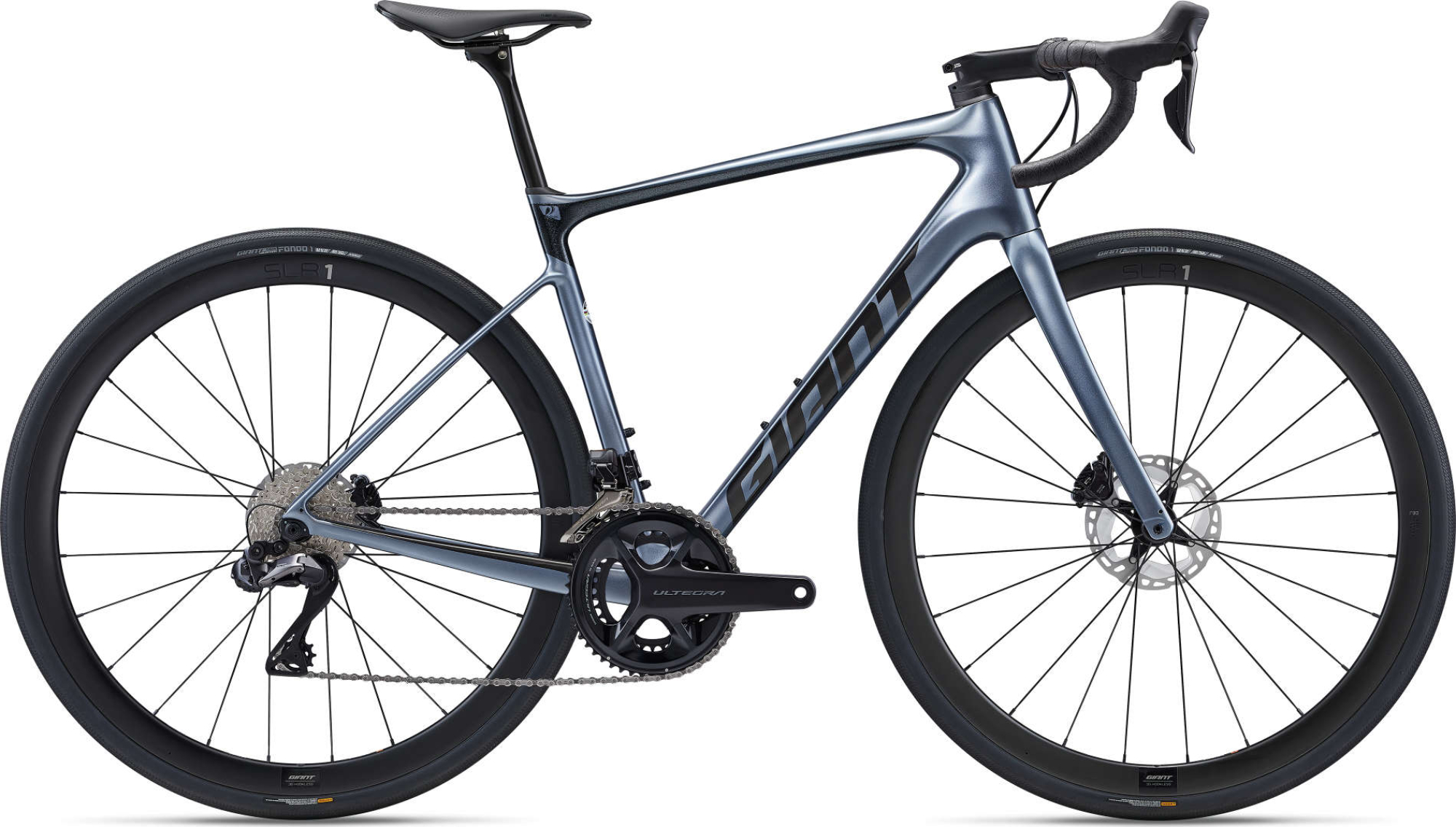
The Giant Deft Advanced Pro range has a quality spec for its price
Specifications
Reasons to buy
Reasons to avoid
With a relaxed position and stable ride, those long miles will be eaten with ease aboard any of the Defy models.
Giant tweaked its best selling bike in 2020. It has taken its D-Fuse seatpost concept and applied it to the handlebars. Now both the seatpost and handlebar will dampen the bumps on the road. The brand has also lengthened the wheelbase slightly to add a comfortable level of stability. The tubes have also been re-shaped.
The Overdrive 2 steerer promises excellent handling and front end stiffness thanks to oversized headset bearings.
The reviewed model comes with a Shimano Ultegra drivetrain. However for 2023 the 11-speed mechanical Ultegra groupset is now offered on the Defy Advanced Pro 2, which features Giant's SLR-2 carbon wheelset, while the Advanced Pro 1 is offered with both 12-speed Shimano Ultegra Di2 and SRAM Force eTap AXS. The top-tier Advanced Pro 0 uses SRAM Red eTap AXS while the Advanced Pro 3 is equipped with Shimano 105.
The Giant Defy Advanced range starts with a model equipped with a Shimano Tiagra groupset (not available in the US). The Advanced 2 features Shimano 105 while the Advanced 1 boasts an Ultegra groupset. There's also an Advanced 0 which utilises SRAM's Rival eTap AXS electronic groupset.
We have a full explainer of all the bikes in the Giant Defy range or you can read our full review of the Giant Defy Advanced Pro 1 here.
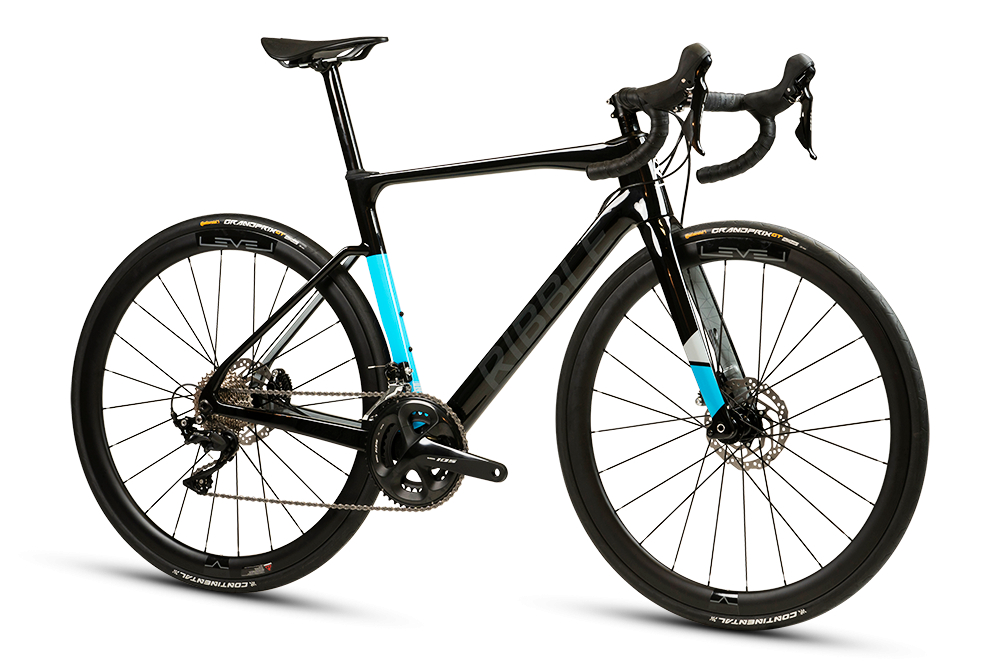
Ribble's bike builder lets you decide on the spec that you want
Specifications
Reasons to buy
Reasons to avoid
With aerodynamically optimized tube shapes and a 2x11 hydraulic disc brake groupset, this offering from Ribble represents extremely good value. The quality of the frame does not disappoint, with the carbon doing a lot to absorb the road buzz. With discrete eyelets for mudguards and confidence-inspiring handling, long winter miles aren’t a problem for this bike.
The Mavic Aksium wheels our bike came with are not the lightest, nor the most aerodynamic. While they are certainly dependable and robust, in pure performance terms they do hold back the bike a little from its full potential.
Fortunately, Ribble allows you to swap out components with its Bikebuilder app. There are a wide range of wheelset options, heading up to some very expensive raceworthy hoops and you can choose the groupset spec that suits your budget, including the new Shimano Ultegra Di2 12-speed.
You can read more about the Ribble Endurance SL Disc here.
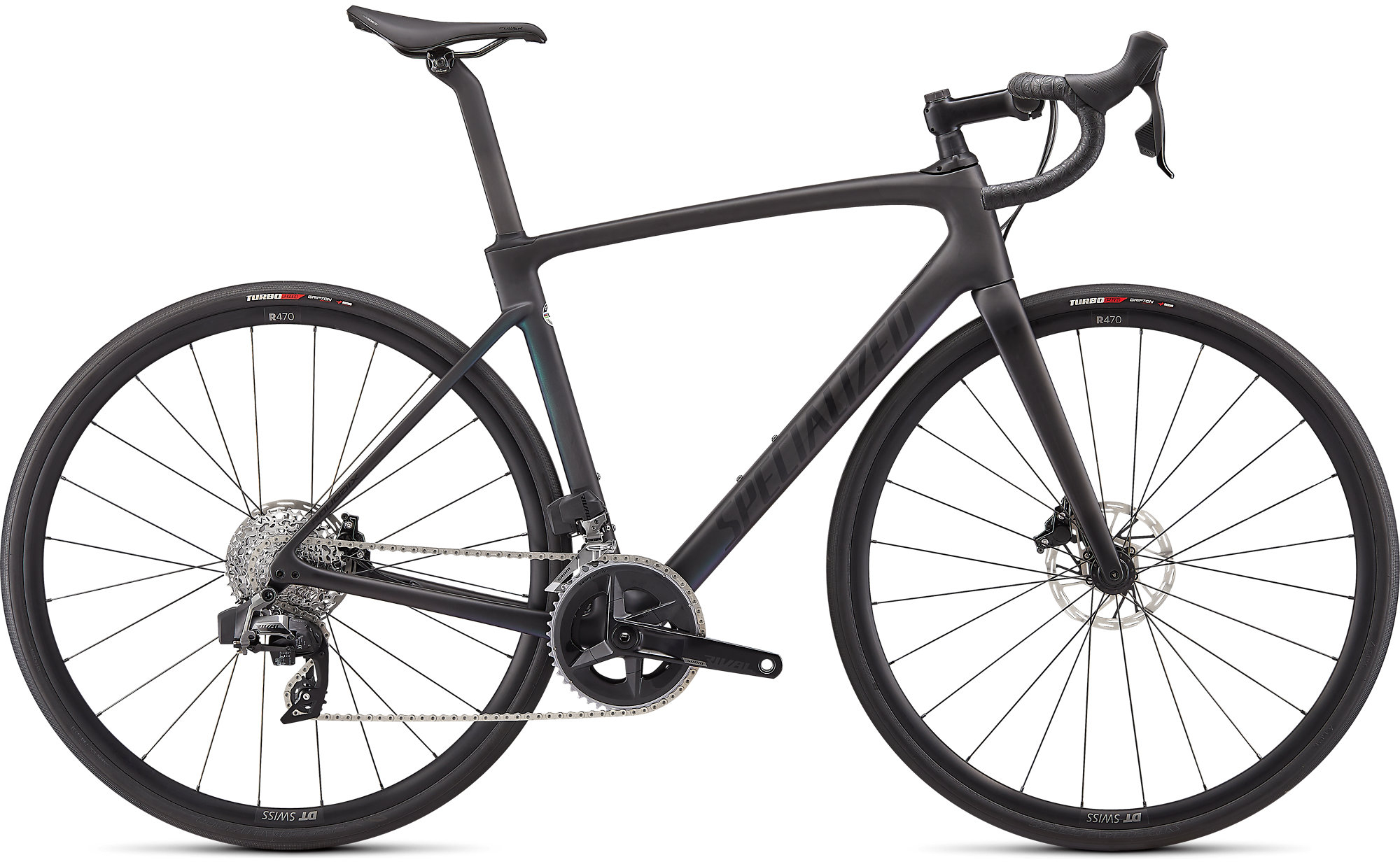
The Specialized Roubaix has great vibration damping
Specifications
Reasons to buy
Reasons to avoid
The Specialized Roubaix saw a major overhaul in 2017 with the addition of the 'Future Shock' front suspension, and 2019 saw another update, with adjustable suspension added to the top models.
The suspension built into the steerer tube provides 20mm of damping between the Hover handlebars, with their slight raise, and the frame. The Future Shock suspension does a great job of improving comfort on really rough surfaces, and also helps to improve handling, as the tyre spends more time in contact with the tarmac around bumpy surfaces. The bar shape does mean that there's less room to mount lights and other accessories though.
At the rear the carbon S-Works Pave seatpost is clamped below the top of the frame, adding some extra flex and compliance and there's clearance for 33mm tyres, although no mudguard mounts. There's a good quality range of finishing kit, although we found the Praxis Alba chainset didn't shift as smoothly as an in-series Shimano 105 unit.
The 2023 Roubaix comes in a number of models with wide ranging specs. The entry level Roubaix Sport comes with a Shimano 105 hydraulic groupset (with a Praxis chainset), while the Comp model is offered with an electronic SRAM Rival eTap AXS groupset (£5,000). There are also Expert and Pro builds as well as the top-tier S-Works bike that comes with Shimano Dura-Ace Di2 12-speed and has an RRP of £12,600.
We reckon that the higher specced models of the Roubaix are a better bet than the entry-level Sport spec, as they give you features like a lockable Future Shock, which helps if you're riding hard. Take a look at our reviews of the Specialized Roubaix Comp.
For more info, read our explainer of the Specialized bike range or our full review of the Specialized Roubaix Sport.
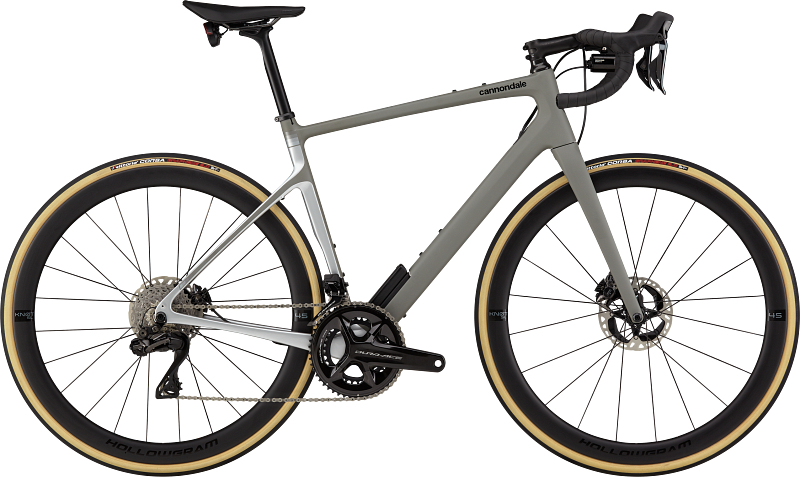
Cannondale's SmartSense system uses a single battery to power lights and a rearview radar
Specifications
Reasons to buy
Reasons to avoid
The Cannondale Synapse is renowned for offering a comfortable ride, without cancelling out the quality handling and frame reactiveness that you want from a road bike.
It's been significantly updated for 2022 and we haven't yet had the opportunity to fully review the latest models, although you can read our first impressions of the Synapse Carbon 2 RL.
The headline-grabbing new feature is the integration of SmartSense lighting and a radar to let you know what's coming up behind you. There's also a new carbon frame with clearance for 35mm tyres, better aerodynamics and mounts for mudguards and a top tube bag.
The RRP for the top spec Synapse Carbon 1 RLE is £9,000 but some of this new tech is offered on cheaper models, such as the Synapse Carbon 3 L, which still boasts the SmartSense lights, and the frameset improvements but is specced with Shimano 105 to help lower the price significantly to £3,200. The spec sheet above applies to this new version rather than the 105-equipped model we reviewed in 2020.
We have recently ridden this latest iteration of the Synapse, where we got to experience first hand the various updates including the SmartSense lights and radar.
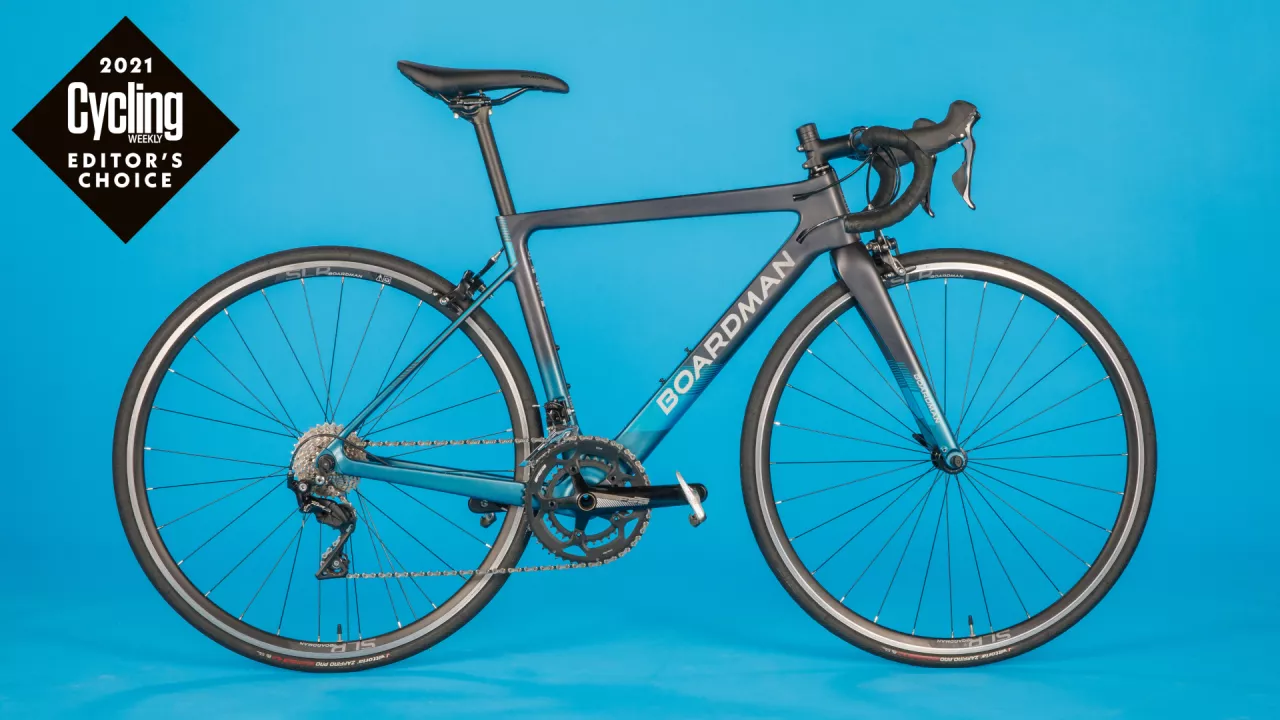
The Boardman SLR range provides great value
Specifications
Reasons to buy
Reasons to avoid
The Boardman SLR 8.9 delivers a carbon frame and fork, which have been wind tunnel tested, for a price that's not much over £1000, where many brands will give you alloy. Although billed as an all-rounder, the SLR 8.9 is plenty comfortable for longer rides and sportives.
To hit that price it's made a few compromises, so you get rim brakes rather than discs, although we found them as effective as the cable operated discs that you're likely to find at this price.
You also don't get quite the full 11-speed Shimano 105 groupset, with an FSA chainset, but it's impressive for the price. Tyre clearance at 28mm is okay, but wider rubber would up the compliance.
Read our full review of the Boardman SLR 8.9 here.
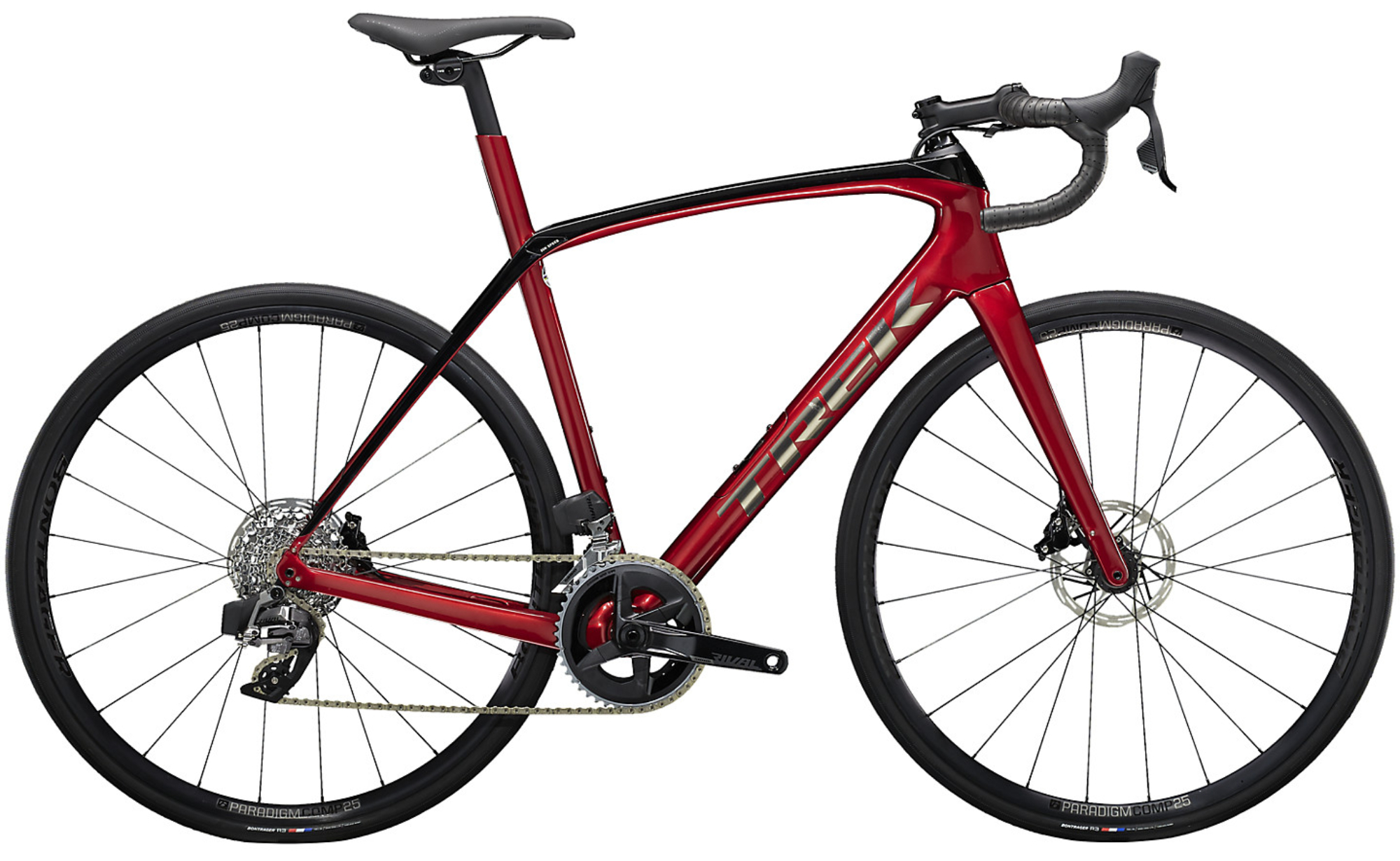
Wide tyres and IsoSpeed provide all-day comfort
Specifications
Reasons to buy
Reasons to avoid
The Trek Domane has evolved over the years into an extremely capable endurance road bike that can tackle long miles on surprisingly rough terrain. Part of its magic is the inclusion of the front and rear IsoSpeed decouplers; these pivot-based flex points take the square edge off big hits without sacrificing any efficiency or power transfer.
The other piece of the pie is the tyre clearance. There is room in the frame for up to 38c tyres (35c with fenders), which also makes it somewhat gravel-friendly. Trek has also integrated nifty down tube storage that comes with a tool roll and is big enough for a few spares and tools or heaps of snacks.
We reviewed the 2019 SL 6 but the 2022 version is offered with both Shimano's Ultegra groupset (as tested) or if you prefer electronic shifting, SRAM's Rival eTap AXS. There's a broad range of Domane models in the range, starting with the sub-£1000 alloy Domane and topped off by the Domane SLR 9 at over £11,000, so it's worth reading our Trek bike range overview for more context.
Read our full review of the Trek Domane SL 6 too.
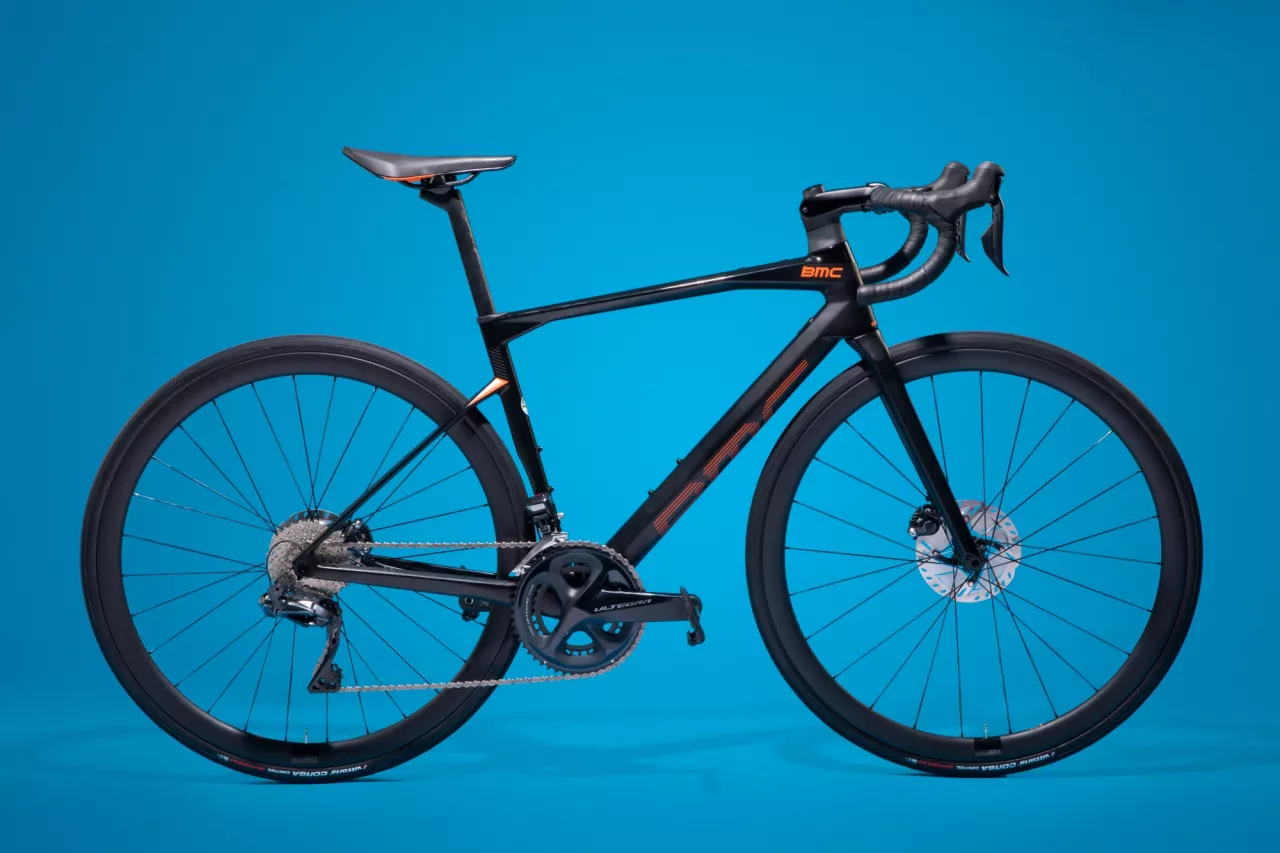
The BMC Roadmachine offers fast handling along with comfort
Specifications
Reasons to buy
Reasons to avoid
The Roadmachine from Swiss brand BMC has the slightly more upright ride position, tubes shaped for compliance and space for tyres up to 33mm that mark it out for endurance riders. It's a bit faster handling than many endurance bikes though.
The Roadmachine 01 comes with BMC's top end carbon and an Ultegra Di2 groupset. There's a D-shaped seatpost, also designed to smooth the road and BMC's integrated cockpit for clean looks. There are no fittings for full mudguards, but BMC does make a rear clip-on that's mounted to the rear of the seatpost to help keep your rear end dry.
Read our full review of the BMC Roadmachine here.
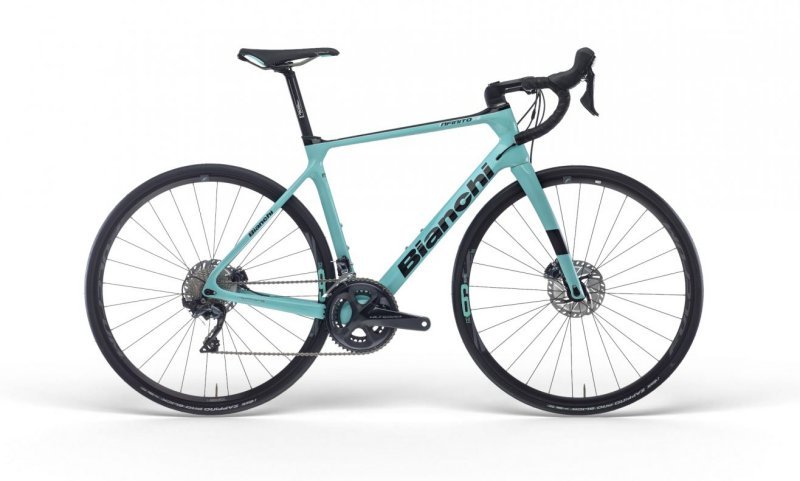
Countervail tech helps add comfort to the Infinito XE
Specifications
Reasons to buy
Reasons to avoid
Painted up in its trademark celeste green, the Bianchi Infinito XE sees a slightly more relaxed position than its racier cousins with a taller head tube and a slightly longer wheelbase — which also makes more room between the rear stays for bigger 32c tyres.
But hidden between the layers of carbon that make up the frame is Bianchi's Countervail vibration cancelling technology. The viscoelastic material which is incorporated into the layup was originally developed for NASA and does surprisingly well to eat up harsh road vibrations before they reach the touchpoints. The layup also sees the same Carbon Nano Technology used in the Oltre XR which reduces the gaps between the resin and carbon fibres vastly increasing the overall stretch and stiffness.
All of this adds up to a planted and confident frame that creates a plush ride, but with chunky tubing that is unyielding to twisting and flexing during big efforts and sprints.
The current model is offered across three builds: 11-speed Shimano 105, Ultegra and SRAM Rival eTap AXS.
Read our full review of the Bianchi Infinito XE.
The Best Endurance Bikes Buyers Guide
What is an endurance or sportive bike?
An endurance bike, otherwise referred to as a sportive or gran fondo bike, is a bike that has been designed to make long days in the saddle just that little bit easier by providing a more comfortable ride that should not only protect your backside from all the vibrations passing through your seat-post and saddle, but should also keep your legs fresher after multiple hours on the road.
These bikes have become increasingly popular over the last few years for two main reasons. First, the huge growth of sportives and fondos has meant that there are more and more people whose main concern when buying a new bike is that it makes eating up the miles on long rides that bit more pleasant. And second, most people don't get to ride on velvety Swiss roads, and so as to tackle broken tamac and chip seal most riders generally value a bike that is able to take the worst out of rough tarmac.
How should an endurance bike ride?
Comfort is your primary concern when buying an endurance bike. As most of your weight is supported by your saddle rather than the handlebars, it is most important that the back-end of the bike is comfortable. However, depending on your position, your arms and wrists will still be bearing a fair amount of your weight so front end comfort is still important.
But comfort is not the be-all and end-all with an endurance bike. After all, comfort is not going to be your only concern 100-percent of the time, and you still want a bike that is able to respond and give an exciting ride when you want to put the hammer down.
This means that you don't want a bike that provides comfort by building flexibility into every part of the frame as this will result in a frame that cannot respond to quick bursts of power and will mean that you can't hold your speed as well. So any extra comfort would be offset by the extra time that you have to spend out on the road due to lower average speeds.
As you're not going to be tearing up a tight and twisty criterium circuit on an endurance bike, the handling should be leaning towards the more chilled out end of the spectrum. This means that you need to put in more effort to navigate the bike through corners, which might sound like a bad thing, but also means that less effort is required to keep it on the straight and narrow.
Don't worry though, it should still be able to cope with everything but seriously fast and technical descents. And anyway, your bike handling is probably more important than the bike's handling when it comes to cornering.
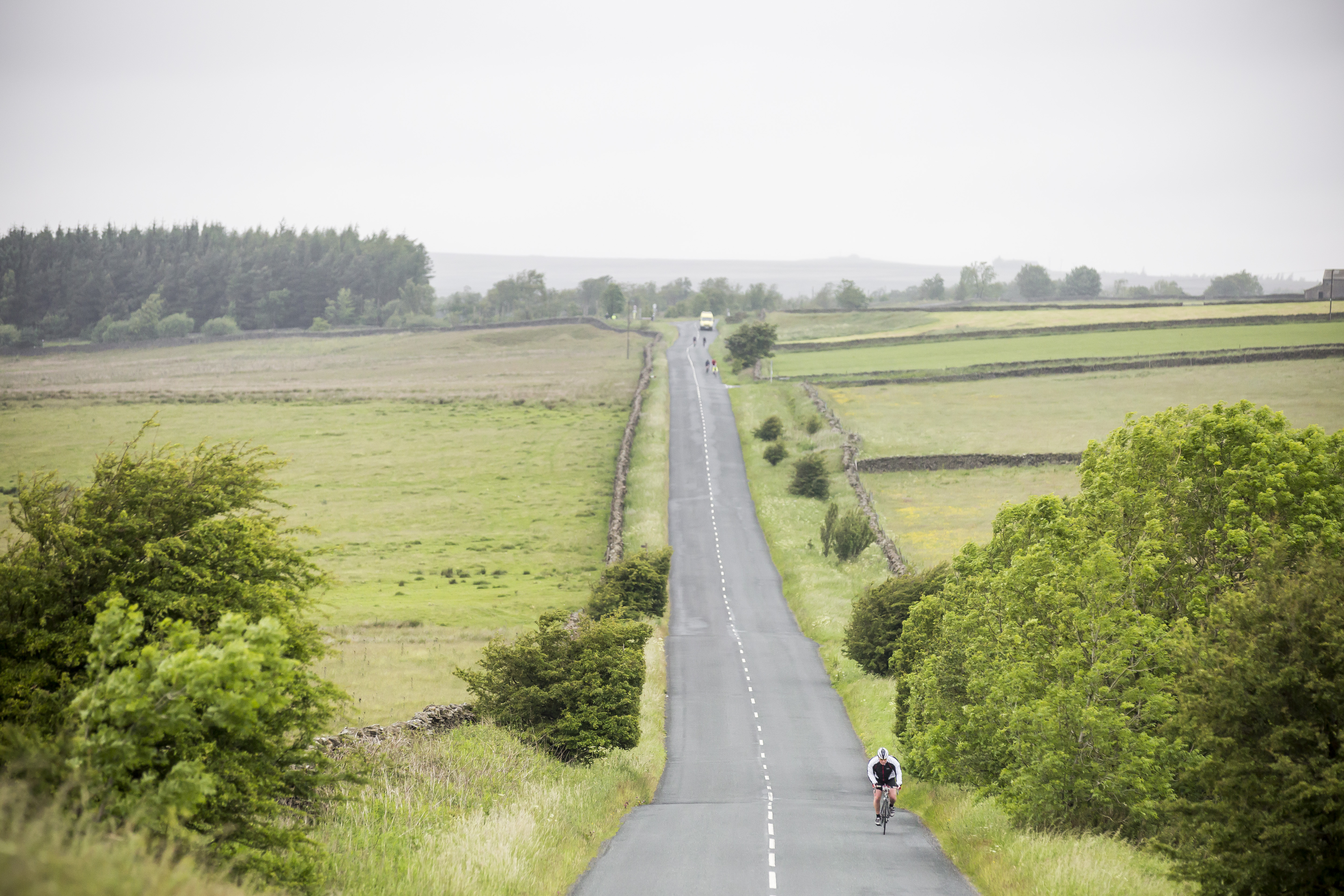
Endurance bikes are designed for long days in the saddle
What is endurance bike geometry?
The geometry is one of the most important elements that defines how a bike rides. Indeed, give an expert a geometry chart and they will be able to have a pretty good guess at the type of bike that they are looking at and how it rides.
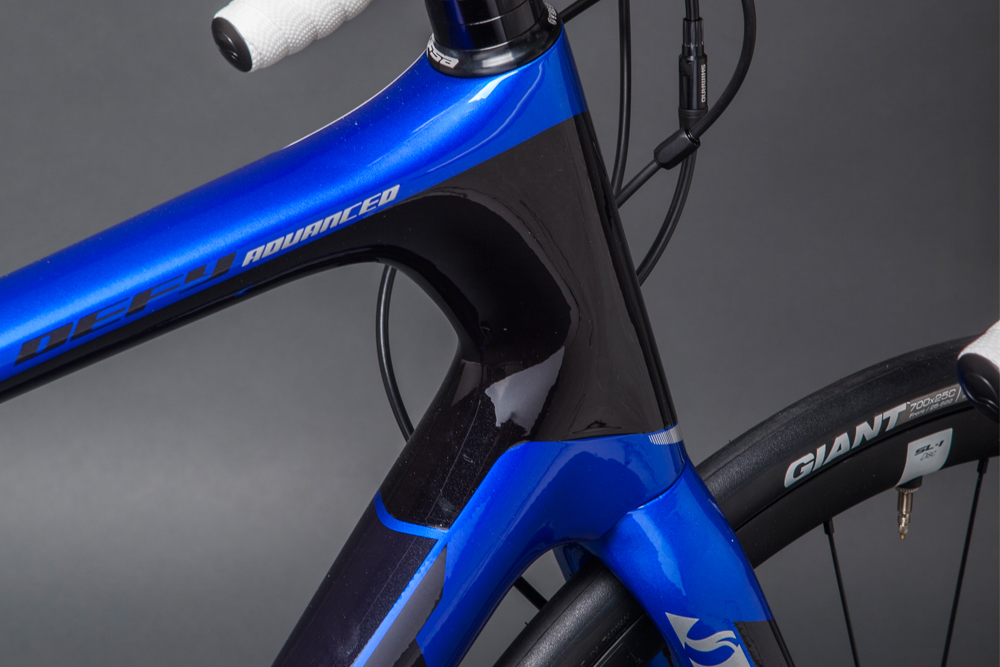
The geometry of an endurance bike is tuned to add comfort and stability
There are a number of features of an endurance bike's geometry that should make it comfortable for riding long distances over rough terrain, normally including a more upright riding position that will place less stress on your back and neck.
The first thing to look for is a taller head tube, which will usually be more than 17cm for a 56cm frame, although on some bikes it will be approaching 20cm, which will mean that you don't have to lean over as far to reach the bars. Of course, this position can always be tweaked by the use of spacers underneath the stem and by using stems of different angles.
Endurance bikes will also usually come with a slightly shorter top tube, which will effectively bring the saddle and handlebars closer together. Again this will mean a more upright, less stretched out position to reduce the strain on your back and neck.
Other endurance bike geometry features are designed to improve the comfort of the frame and to alter the bike's handling. Most endurance bikes have a slightly slacker head tube angle and greater fork rake, which will create a more compliant front end and more stable handling, while a longer wheelbase (occasionally greater than a metre) also makes for a less twitchy ride.
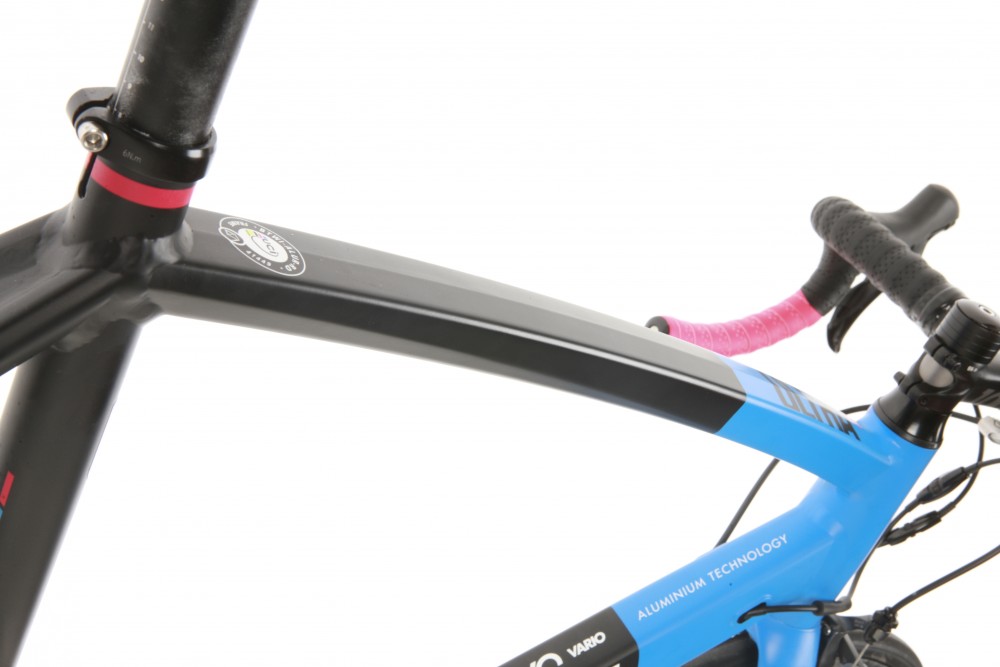
Slacker frame angles add stability
What makes an endurance bike comfortable?
Aside from the geometry there are a whole load of different features that different manufacturers build into their endurance bikes to try and make them stand out from the crowd.
One of the most popular such features is the use of some sort of suspension or vibration dampening technology to reduce the amount of road buzz that is transmitted through the frame and into your body. Two of the most well-known are Trek's IsoSpeed decoupler technology and Specialized's Future Shock, although there are other similar systems used by the likes of Pinarello and Lapierre. Other brands like Bianchi (see above) and Look build layers of vibration absorbing materials into their carbon layups.
Yet other manufacturers create comfortable endurance bikes by working with the carbon-fibre layups of the frames to build flex into areas like the seatstays and top tube while other areas of the frame are stiffened up to make sure that power transfer isn't hindered.
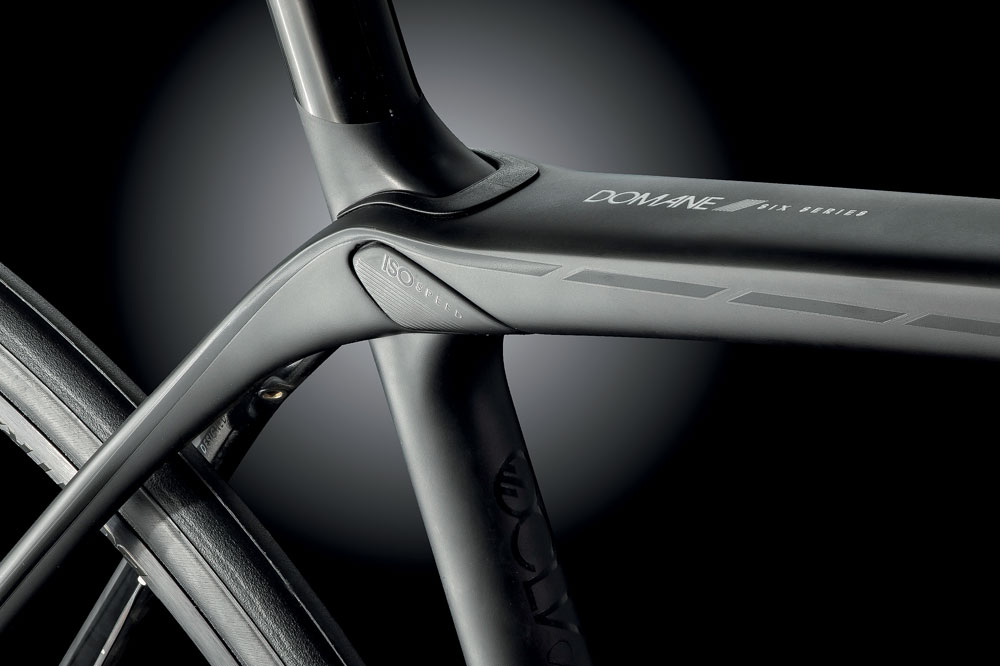
Features like Trek's IsoSpeed increase ride comfort
What components should I look out for on an endurance bike?
As when buying any new bike, the most important thing to look at when buying an endurance bike is the groupset. Most endurance bikes will come with gearing with a wide range that should enable you to get up some pretty steep hills even when tired at the end of a long ride but still ride relatively fast on flat and downhill runs.
This will usually mean a compact chainset (50/34t) and a wide range cassette with a 32t or even 34t largest sprocket. SRAM eTap AXS cassettes go out to 36 teeth. Along with smaller chainrings, enabled by SRAM's cassettes going down to 10 teeth, that means that there's more range on the large chainring before you need to change down and a lot of low range with the small chainring, which goes well below 1:1.
However, your choice of groupset won't affect the comfort of your endurance bike, while your choice of wheels and tyres certainly will.
You probably won't get much of a choice if you're buying a complete bike, but some wheels with wider rims combined with wider tyres will improve the comfort of the ride. More and more endurance bikes are coming with clearance for 28mm, 30mm or even wider tyres, which can be run at lower pressures to soak up road vibrations, and come with the added benefit of better grip and lower rolling resistance. Most of them can be run tubeless too, which lets you lower tyre pressure even more.
The benefits are greater when combined with wider rims, which allow for a greater volume of air within the tyre at any given pressure, and therefore a more comfortable ride, as well as making for a wheel that is also able to absorb more vibrations from the road and greater tyre stability for predictable cornering.

Endurance bikes typically offer a wide gear range
Finally, the majority of endurance bikes come with disc brakes rather than rim brakes. These are by no means a deal breaker, but certainly offer a number of benefits over rim brakes. Most notably you get more consistent braking performance in wet and dry conditions, while they have more braking power and better modulation as you don't need to squeeze the brake lever as hard to apply the brakes.
More expensive bikes are likely to have hydraulic rather than mechanical disc brakes. In general hydraulic systems are more powerful than mechanical disc brakes and they're a closed system so not subject to contamination and should be lower maintenance.
How must does an endurance bike cost?
There's no need to splash the cash in search of a good endurance bike. The geometry is probably the most important thing in creating a comfortable endurance bike, and in general bikes at the lower end of the market have a more relaxed geometry. This means that you should be able to pick up a comfortable endurance bike for well under a grand.
However, if you want something made out of carbon fibre and featuring the bells and whistles of some snazzy vibration dampening technology, then you can spend a lot more than that. £2,000 / $2500 and a bit of shopping around should be able to secure you a bike with the same frame design features as used by the pros in the likes of Paris-Roubaix and the Tour of Flanders, albeit made with a cheaper mix of carbon fibre and with a cheaper (although usually perfectly good) groupset and heavier wheels.
Spending more money than this will move you up the groupset ladder but might not give you a significantly better frame, so it's worth considering whether this extra money is better spent on other kit, such as some high quality shorts which will greatly improve your comfort on long days in the saddle, or a bike fit which could relieve any aches and pains that you get from riding.
The latest race content, interviews, features, reviews and expert buying guides, direct to your inbox!

After winning the 2019 National Single-Speed Cross-Country Mountain Biking Championships and claiming the plushie unicorn (true story), Stefan swapped the flat-bars for drop-bars and has never looked back.
Since then, he’s earnt his 2ⁿᵈ cat racing licence in his first season racing as a third, completed the South Downs Double in under 20 hours and Everested in under 12.
But his favourite rides are multiday bikepacking trips, with all the huge amount of cycling tech and long days spent exploring new roads and trails - as well as histories and cultures. Most recently, he’s spent two weeks riding from Budapest into the mountains of Slovakia.
Height: 177cm
Weight: 67–69kg